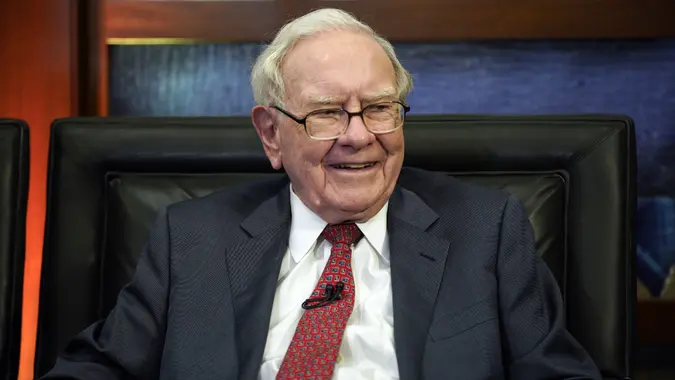5 Key Differences Between the Upper Class Today vs. 20 Years Ago

Commitment to Our Readers
GOBankingRates' editorial team is committed to bringing you unbiased reviews and information. We use data-driven methodologies to evaluate financial products and services - our reviews and ratings are not influenced by advertisers. You can read more about our editorial guidelines and our products and services review methodology.

20 Years
Helping You Live Richer

Reviewed
by Experts

Trusted by
Millions of Readers
You’ve likely heard that the rich are getting richer, the poor are getting poorer and the middle class is disappearing.
There’s a reason for that and it has a lot to do with income levels and wealth concentration. Of course, there have always been the rich and the poor in the United States, but what that looks like for both has changed dramatically.
Here are the key differences between the upper class of today and the upper class of 20 years ago.
Income Levels for the Wealthy Have Skyrocketed
The income levels of the top 10% have surged more than sixfold between 1963 and 2022, according to the Urban Institute. Yes. You read that right.
We currently have 3,028 billionaires in the world. In 2005, there were only 691 billionaires, according to Forbes.
So, it’s not just a matter of having wealthier people in the world. In fact, we don’t. It’s a matter of how much money the wealthy people make: so much more than they could have dreamed of just 20 years ago.
Wealth Concentration Is Extreme
Of course, the rich aren’t just getting richer. They’re also getting more of the overall wealth.
Statista data shows that the top 10% of households in the United States now control about 70% of the nation’s total wealth. In 2000, the top 10% controlled around 60% of the wealth. So, there’s a clear trajectory of wealth moving out of the hands of the working class and the middle class into the hands of the wealthy.
It’s fair to say this wealth concentration is directly related to income inequality and the ability of the upper class to invest and save money.
The wealthy are also able to pass their money down to the next generation, who can then grow that wealth even more.
New Money Is More Prevalent
Another major change we’ve seen in the last 20 years in the upper class is the prevalence of new money, according to the Federal Reserve Bank of St. Louis.
There was once a time when the ultra-wealthy came only from “old money.” This was wealth that was passed down over several generations. The wealthy all knew each other, their children intermarried and they carried family legacies.
In fact, “new money” — or people who had improved their financial situations in a single lifetime — were often frowned upon and even shunned from so-called respectable social circles.
That’s no longer the case.
Today, more and more wealthy people do indeed have “new money.” Tech billionaires and startup entrepreneurs are elbowing their way into the events of the upper elite. And it is now more acceptable to arrive in these circles even as a relative unknown.
Philanthropy Is More Focused on Tax Breaks
Another critical change we’ve seen in the upper class is the shift around charity and philanthropy. The ultra-wealthy have traditionally given to causes they’re passionate about or poured money into impoverished areas; we now see the majority of so-called philanthropists giving to charities for tax breaks.
While “giving” is up among the upper class, the tax incentives for giving are also up.
Per the Tax Policy Center, since the Tax Cuts and Jobs Act in 2017, working-class and middle-class earners (for the most part) lost incentives to donate to charity. But the wealthy continued to benefit at a rate of 30%, according to Inequality.org
What this means is that the upper class now has more power to decide where charitable contributions go and because they get such huge tax benefits from those contributions, it’s essentially taxpayer money that’s making those donations.
Very wealthy individuals put money into a project that works for them; they write it off as a tax deduction and the federal government reimburses that contribution with money they collect from the working and middle class.
Political Influence Has Become Even More Enhanced
If there’s anything we can take from the previous election without question, it is the power of money in politics, with wealthy individuals giving a much bigger portion of donations than small donors.
The richest man in the world backed the winning candidate with over a quarter of a billion dollars, per Reuters. It’s undeniable that this financial contribution, plus Musk’s platform on X, held incredible sway.
Of course, Musk and Trump are only the most recent examples. Money in politics has grown tremendously in the last two decades, to the point where many are now arguing that America is moving from a democracy to an oligarchy.
If you’re in the upper class, this is good news for you. The more money you have to contribute to causes that matter to you, the more power you can wield in shaping this country.
 Written by
Written by  Edited by
Edited by 

























